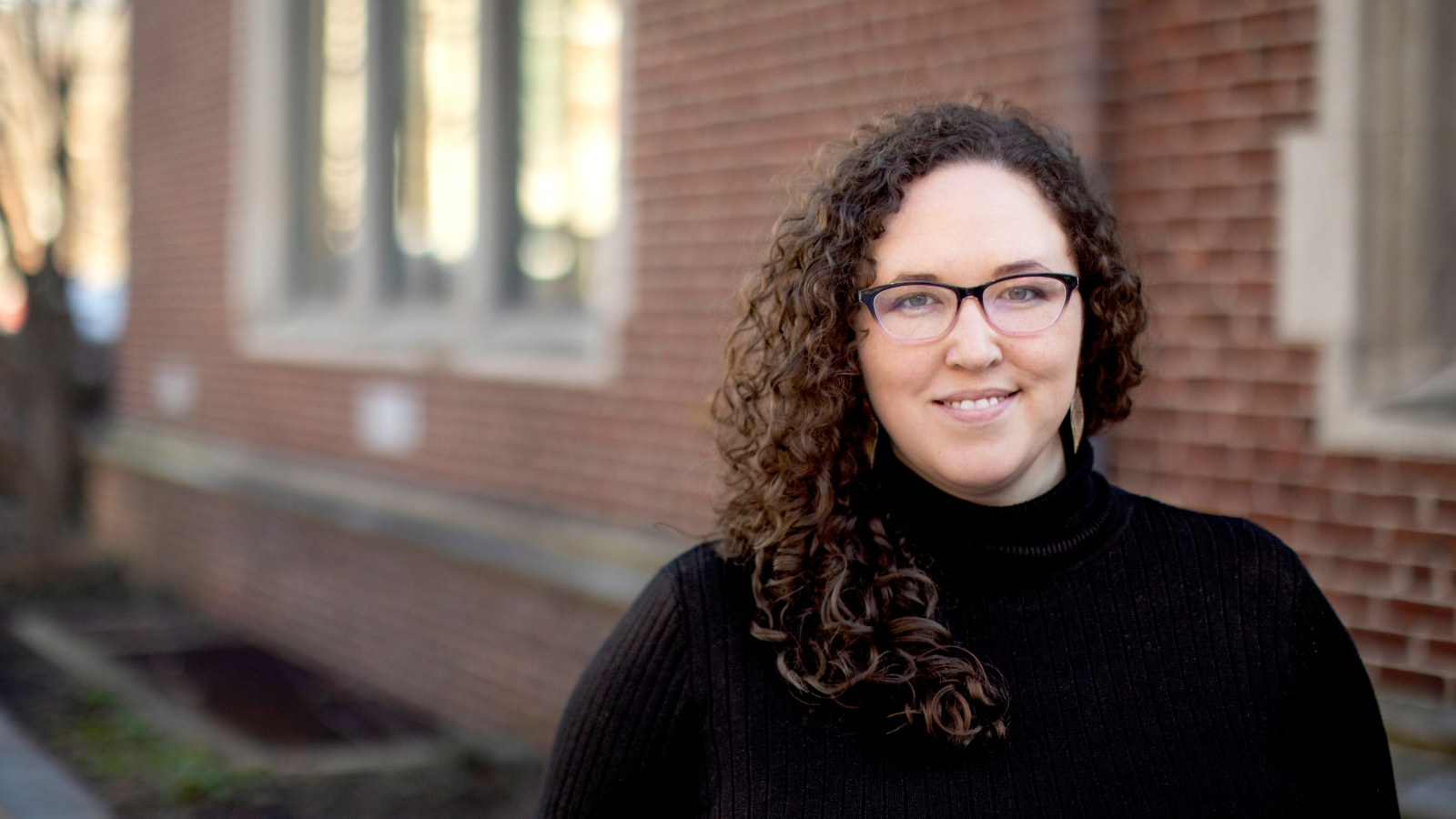The Power of Chick Lit
Meghan Hall, lecturer and associate director for graduate studies in the Department of English, talks about what gives the popular literary genre its staying power.

This spring Meghan Hall, lecturer and associate director for graduate studies in English, is teaching a course called Intro to Chick Lit. Hall’s background is in 16th- and 17th-century English literature, race, and gender studies. Omnia talked with her about what chick lit is, what it offers to its legions of readers and film viewers, and where she believes it’s going.
What made you decide to teach this course?
I’ve always been interested in literature written by women for a presumed female readership, and how experience and wisdom were shared between women through storytelling. My dissertation focused on women’s writing in the 17th century and how it portrayed female characters traveling, which was a new possibility for women at that time.
In my spare time I was reading romance novels and chick lit for fun, and I started to see overlap in how those stories allowed women authors to share their experiences of being a woman. Chick lit is a genre that really centers that transmission between women, and when I saw the opportunity to teach this class, I jumped at it.
How do you define chick lit? What are its roots?
“Chick lit” was a name given to fiction that emerged and thrived from roughly the 1990s to the early 2000s, originally in Britain and the U.S. These were books written mainly by women and marketed to young women in their 20s and 30s. The protagonists were similarly young, kind of plucky, often imperfect or a bit awkward, almost always living in a city or an urban environment and seeking fulfillment, whether through a romantic connection or professional development or finding meaning in their lives. Think Sex in the City, think Bridget Jones’s Diary.
The mid-1990s, when the genre emerged, was an era when popular culture was reclaiming insults against women as markers of female empowerment (like “girl power,” “bad bitch,” etc.), so publishers and readers embraced the term “chick lit” despite the negative connotations of the word “chick.” The term fell out of favor with publishers in the early 2010s. But of course, chick lit continues, marketed as general contemporary fiction or romance or one of its affiliated genres, and it continues to be hugely popular.
If we set aside the value judgment, these works have both literary merit and cultural import. They hold a mirror up to contemporary society and try to imagine alternate ways of being and belonging.
This class takes a broad view of the genre. We start with precursors like Jane Austen and end with newer, boundary-pushing work that both critiques and upholds parts of the genre. We’re currently reading Austen’s Emma, written in 1815. The language is very different from how we talk today, but the students are incredibly engaged with it. They’re picking up on its themes of gossip and female friendship and how courtship is different for men and women in this era. Other precursors include Edith Wharton, or Evelina by Fanny Burney, an 18th-century epistolary novel about a girl making her way in life after coming out in society. There are definite boundaries to what chick lit is and isn’t, but those boundaries can be quite porous.
Why do you think chick lit remains popular?
I think about this a lot. One reason is that relating to a fictional character and their story is an underrated mode of engaging a literary or cinematic work. As literary scholars, we tend to prefer a more objective bird’s-eye view. But chick lit invites readers to relate to the main character. You feel for the character when they’re down, you’re happy when they succeed. That relational aspect is powerful. Through storytelling, chick lit re-theorizes ways of going through life as a woman—and I think that’s never not going to be popular or necessary.
Some of the genre’s detractors call it trivial or fluffy. Is that fair?
This comes up particularly with the question of whether chick lit is feminist or anti-feminist. Those who have called chick lit trivial for depicting the shallow parts of women’s lives think it reflects poorly on women writers and on women themselves, that it’s perpetuating stereotypes. Whether or not these texts are feminist is a primary question of the course. Sometimes we land on yes and sometimes we land on no. But the question is only useful up to a point. Judging chick lit as problematic, anti-feminist, fluffy, in its themes and portrayals of women has led to it being dismissed as worthy of study.
If we set aside the value judgment, these works have both literary merit and cultural import. They hold a mirror up to contemporary society and try to imagine alternate ways of being and belonging. So, I think that by thinking with the text and thinking with the films, we see that these works are much deeper than we might initially believe.
What are the latest trends?
Chick lit has become a bit meta. For instance, in Torrey Peters’s 2021 novel Detransition, Baby, which we will read in class, a main character references earlier works of chick lit, such as Sex and the City, as cultural touchstones, but also to make the case that these earlier works had fundamentally limited understandings of what it means to be a woman. The recent Barbie movie explores the concept of the commercialization of feminism, even as it is, itself, a commercial product (a toy, and more broadly, a blockbuster film) talking about feminism.
So, I think the trend is looking back and asking, “What wonderful things has chick lit given to its readers? And what is ready to be critiqued and broken down so that we can understand its limitations and expand the genre’s horizons?”


